The alternating dumbbell pullover is a dynamic exercise that targets multiple muscle groups in the upper body. By incorporating this exercise into your workout routine, you can enhance your strength, improve your posture, and develop a well-rounded physique. Unlike traditional pullovers, the alternating dumbbell pullover adds challenge by engaging your core and stabilizer muscles.
Whether you’re a beginner or an experienced gym-goer, mastering this exercise can bring remarkable benefits to your fitness journey. In this guide, we will explore the purpose and advantages of the alternating dumbbell pullover, as well as provide you with essential tips to perform it effectively and safely. Get ready to unleash the full potential of your upper body strength with this upper body exercise!
What is an Alternating Dumbbell Pullover?
The alternating db pullover is an exercise that involves lying on a stability ball or bench and extending the arms with dumbbells in hand, moving them in a semi-circular motion behind the head. It targets multiple muscles in the upper body, including the back, chest, and shoulders, while also engaging the core and stabilizer muscles.
Incorporating this exercise into your fitness routine can help improve upper body strength, posture, and overall muscle development.
Incorporating this upper body into your fitness regimen can provide numerous benefits, from strengthening key muscle groups to improving posture and functional fitness. Remember to always practice proper form and gradually increase weights and intensity to ensure safe and effective results.
Anatomy and Muscles Worked
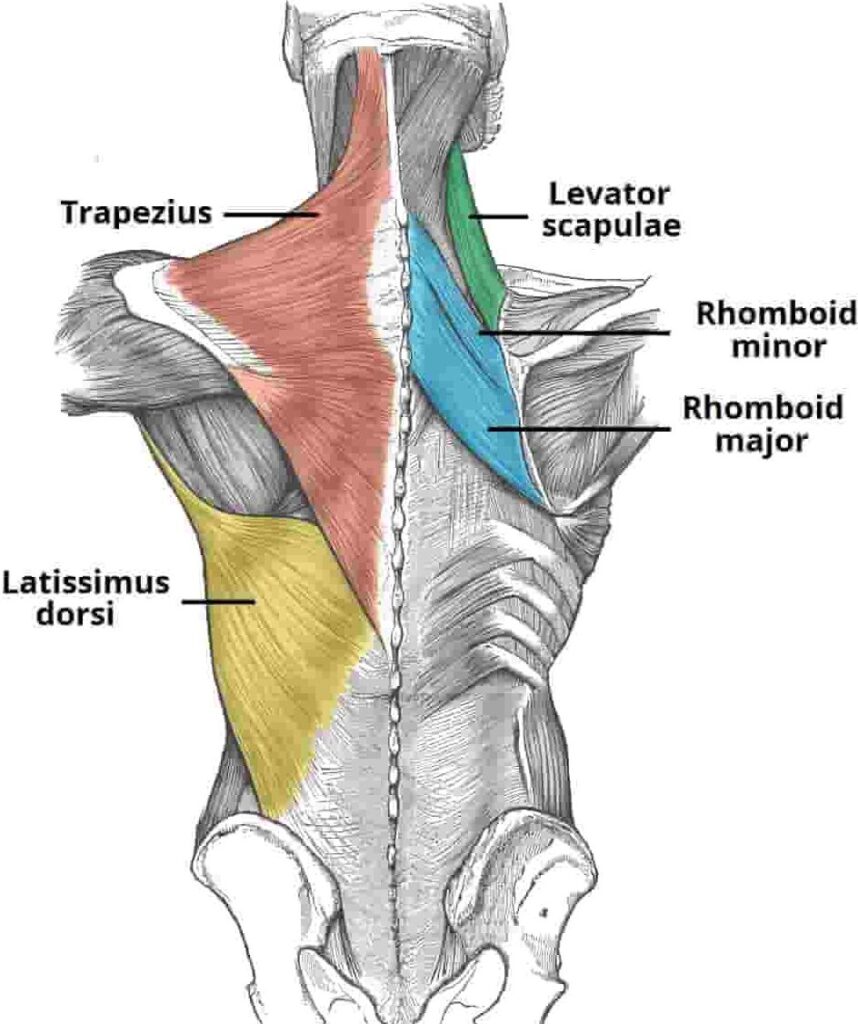
Muscles Targeted by the Alternating dumbbell pullover
- Primary muscles targeted:
- Latissimus dorsi (lats): The main muscle engaged during the alternating dumbbell pullover, responsible for pulling the arms down towards the sides of the body.
- Pectoralis major (pecs): Assists in the movement by stabilizing the shoulder joint and contributing to the pulling motion.
- Triceps brachii: Actively engages during the extension phase of the exercise when the dumbbell is moved away from the body.
- Secondary muscles targeted:
- Rhomboids: Responsible for retracting the scapulae and stabilizing the shoulder blades.
- Trapezius (upper and middle fibers): Assist in shoulder blade retraction and stability.
- Posterior deltoids: Support the movement by assisting in shoulder extension.
- Erector spinae: Helps stabilize and maintain proper spinal alignment during the exercise.
- Transverse abdominis and obliques: Engage to provide core stability and prevent excessive arching of the back.
It’s important to note that while the primary focus is on the lats, several other muscles in the upper body, including the chest, triceps, and various stabilizer muscles, are also engaged to support the movement and maintain proper form.
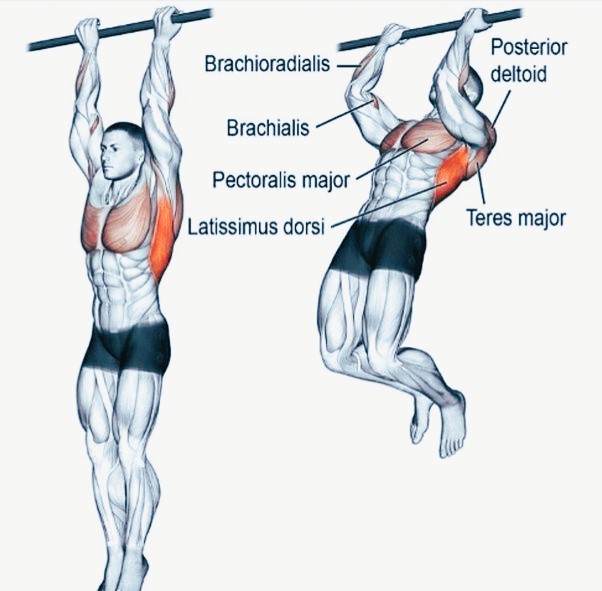
Step-by-step guide
Proper technique is crucial when performing alternating dumbbell pullovers to ensure you’re getting the most out of the exercise and to avoid injury
A. Set-Up and Equipment Needed
To perform the Alternating dumbbell pullover, you’ll need the following equipment:
- Find a flat bench or mat to lie down on.
- Place a dumbbell next to the bench/mat.
B. Step-by-Step Guide
Here’s a detailed breakdown of how to execute the exercise correctly:
- Initial Position
- Lie flat on the bench/mat with your upper back resting on it. Keep your feet firmly planted on the ground and your thighs parallel to the floor.
- Grab one dumbbell with an overhand grip (palms facing down). Extend your arm straight above your chest. This will be your starting position.
2. Execution of the Exercise:
- Inhale deeply and engage your core muscles for stability.
- Slowly lower the dumbbell in a semicircular motion behind your head, keeping your arm straight. Go as far down as you can comfortably without straining your shoulder joint.
- Exhale as you bring the dumbbell back to the starting position, using the same path in a controlled manner.
- Once you complete the desired number of repetitions with one arm, switch to the other arm and repeat the movement.
3. Breathing Tips
- Inhale deeply before lowering the dumbbell.
- Exhale as you bring the dumbbell back to the starting position.
Remember to start with a weight that allows you to maintain proper form throughout the exercise. Gradually increase the weight as your strength and comfort level improve.
Please consult with a fitness professional or trainer if you have any doubts or concerns about performing this exercise correctly and safely.
Benefits of Alternative Dumbbell Pullover
Alternating dumbbell pullover offers several significant benefits:
- Strengthening the Latissimus Dorsi (Lats): This strength exercise primarily targets the latissimus dorsi muscles, also known as the lats. Strengthening these muscles can improve back strength and posture.
- Building Upper Body Strength: In addition to the lats, the exercise engages other upper body muscles, including the pectoralis major (pecs), triceps brachii, rhomboids, posterior deltoids, and trapezius. This helps develop strength and definition in the chest, shoulders, and arms.
- Improving Core Stability: This upper body exercise requires core engagement to maintain stability. This activates muscles such as the transverse abdominis and obliques, improving core stability and support.
- Enhancing Shoulder Mobility: By performing controlled shoulder movements during the exercise, you can improve shoulder mobility and flexibility. This can be especially beneficial for individuals with tight or restricted shoulder joints.
- Engaging Stabilizer Muscles: Various stabilizer muscles, including the erector spinae and muscles around the shoulder blades, are activated during this exercise. Strengthening these muscles can enhance overall stability and reduce the risk of injury.
- Adding Variety to Your Workout: The alternating dumbbell pullover offers a different stimulus compared to traditional back exercises like rows and pull-ups. Incorporating this exercise into your routine adds variety and challenges your muscles in new ways.
- Remember to always prioritize proper form and start with an appropriate weight for your fitness level. Gradually increase the weight as you become more comfortable and experienced with the exercise.
Dumbbell Pullover Alternatives:
1. Single-arm dumbbell Pullover
In this variation, you will perform the pullover exercise one arm at a time, focusing on each side independently.
Technique and Execution:
- Lie flat on your back on an exercise mat with your knees bent and feet flat on the ground. Hold a dumbbell in one hand, palm facing up, and extend your arm straight above your chest.
- Slowly lower the dumbbell behind your head while keeping your arm extended and a slight bend in your elbow.
- Pause briefly when the dumbbell is parallel to the ground, feeling a stretch in your lat and chest.
- Exhale and return the dumbbell to the starting position above your chest, then repeat the movement with the opposite arm.
- Continue alternating sides for the desired number of repetitions.
2. Decline Dumbbell Pullover
This variation adds an incline element by performing the pullover exercise on a decline bench, increasing the challenge for your core and upper body.
Proper Form and Execution:
- Set up a decline bench at an appropriate angle (around 30-45 degrees) and secure your feet at the top end of the bench.
- Lie on the bench face up, holding a dumbbell in both hands, palms facing up, and arms extended straight above your chest.
- Lower the dumbbell(s) behind your head while maintaining a slight bend in your elbows.
- Pause briefly when the dumbbell(s) is parallel to the ground, feeling a stretch in your lats and chest.
- Exhale and return the dumbbell(s) to the starting position above your chest.
- Repeat for the desired number of repetitions.
3. Stability Ball Dumbbell Pullover
This variation incorporates a stability ball, adding an element of instability that engages more muscles for balance and core strength.
Step-by-Step Guide
- Sit on a stability ball with your feet planted firmly on the ground and roll forward until your upper back is supported on the ball. Your knees should be bent at a 90-degree angle.
- Hold a dumbbell in both hands, palms facing up, and extend your arms straight above your chest.
- Slowly lower the dumbbell(s) behind your head while keeping your arms extended and a slight bend in your elbows.
- Pause briefly when the dumbbell(s) is parallel to the ground, feeling a stretch in your lats and chest.
- Exhale and return the dumbbell(s) to the starting position above your chest.
- Repeat for the desired number of repetitions.
How Alternating Dumbbell Pullover differ from other pullover variations
While all variations of the pullover exercise have their benefits, the alternating dumbbell pullover specifically focuses on engaging the core and stabilizer muscles by performing the movement with alternating arm motions. This variation also allows for an increased range of motion in the shoulder joint. On the other hand, the traditional dumbbell pullover and cable pullover variations primarily target specific muscle groups and offer different levels of resistance and adjustability.
| Alternating Dumbbell Pullover | Traditional Dumbbell Pullover | Cable Pullover |
|---|---|---|
| Involves alternating arm movements, one arm at a time. | Both arms move together in a synchronized motion. | Utilizes a cable machine with a handle attachment. |
| Engages the core and stabilizer muscles for balance and control. | Focuses primarily on the chest, back, and shoulder muscles. | Provides constant tension throughout the movement due to the resistance from the cable. |
| Can be performed with a stability ball or bench for added challenge. | Typically performed lying on a bench or stability ball. | Requires the use of a cable machine, limiting flexibility in terms of setup. |
| Offers the benefit of increased range of motion in the shoulder joint. | Provides a good stretch for the chest and lats. | Allows for adjustable resistance levels by changing the weight stack. |
| Can be modified for different fitness levels by adjusting dumbbell weight. | Dumbbell weight can be adjusted to suit individual strength levels. | Resistance can be adjusted by increasing or decreasing the weight stack. |
| Enhances functional fitness by mimicking everyday reaching and lifting movements. | Improves upper body strength and posture. | Targets specific muscle groups without engaging stabilizer muscles as much. |
Modifications for Beginners or Specific Needs
Modifications for beginners include starting with lighter weights or resistance bands and reducing the range of motion to maintain proper form and prevent strain. Using a stability ball for added support can also make the exercise more accessible.
- Lighter Weights: Beginners can start with lighter dumbbells or even substitute them with resistance bands to reduce the intensity of the exercise. This allows for gradual progression as strength improves.
- Bent-Knee Position: For individuals with lower back issues or limited core strength, performing the exercise with bent knees can provide additional support and stability.
- Reduced Range of Motion: Beginners can decrease the range of motion by not lowering the dumbbell(s) as far behind the head. This modification can help maintain proper form and prevent strain on the shoulders or back.
- Two-Arm Pullover: Beginners can begin by performing the alternating dumbbell pullover with both arms simultaneously. This simplifies the movement and allows for greater control and coordination.
- Stability Ball Assistance: Using a stability ball as support under the upper back can provide additional stability and make the exercise more accessible for beginners or individuals with balance concerns.
Remember, it’s important to listen to your body and adjust the exercise according to your individual needs and limitations. If you have any specific concerns or conditions, consult with a fitness professional for personalized modifications and guidance.
Tips to Maximize Results and Safety
Follow these tips to maximize results and ensure safety when performing alternating dumbbell pullovers:
- Focus on Proper Form: Maintain a slight bend in your elbows, engage your core, and keep your back flat against the bench or stability ball. Avoid excessive arching of the lower back to prevent strain.
- Start with Lighter Weights: Begin with lighter dumbbells to master the exercise’s technique and ensure proper form. As you become more comfortable, gradually increase the weight to challenge your muscles.
- Control the Movement: Slowly lower the dumbbell(s) behind your head while maintaining control throughout the entire range of motion. Avoid using momentum or swinging the weights, as this can increase the risk of injury.
- Breathe Correctly: Exhale as you lower the dumbbell(s) behind your head and inhale as you bring them back to the starting position. Proper breathing helps stabilize your core and maintain control during the exercise.
- Listen to Your Body: If you experience any pain or discomfort, stop the exercise and reassess your form. It’s important to work within your limits and avoid pushing yourself too hard, especially if you’re a beginner or have specific limitations.
- Gradually Increase Intensity: To progress, gradually increase the weight or the number of reps over time. This progressive overload helps stimulate muscle growth and strength gains.
- Include Variation: Incorporate variations of the alternating dumbbell pullover, such as single-arm pullovers or using a stability ball for added challenge and core engagement.
By following these tips, you can optimize your results and maintain a safe workout routine.
Sample Workouts and Training Plans
Sample Workout Routines Incorporating the Alternating Dumbbell Pullover:
- Strength-focused Workout:
- Perform 3 sets of 6-8 reps of alternating dumbbell pullovers.
- Pair with exercises like barbell bench press, bent-over rows, and lat pulldowns.
- Gradually increase the weight over time to challenge your strength.
- Hypertrophy-focused Workout:
- Perform 3-4 sets of 10-12 reps of alternating dumbbell pullovers.
- Combine with exercises like dumbbell chest press, seated cable rows, and cable flyes.
- Aim for progressive overload by increasing weight or reps as you progress.
Remember to warm up properly, maintain proper form, and consult with a fitness professional for personalized guidance and modifications.
Common Mistakes to Avoid
Here are some common mistakes to avoid when doing alternating dumbbell pullovers:
- Arching the Lower Back: Avoid excessive arching or hyperextension of the lower back during the movement. This puts unnecessary strain on the spine and can lead to injury. Keep your back flat against the bench or stability ball throughout the exercise.
- Using Too Much Weight: It’s important to start with an appropriate weight that allows you to maintain proper form and control. Using weights that are too heavy can compromise your technique and increase the risk of injury. Gradually increase the weight as you become stronger and more comfortable with the exercise.
- Swinging the Weights: Using momentum or swinging the dumbbells to complete the movement reduces the effectiveness of the exercise and can strain your muscles. Focus on controlled movements, emphasizing the stretch and contraction of your chest and back muscles.
- Neglecting Core Engagement: Your core plays a crucial role in stabilizing your body during the exercise. Engage your core by bracing your abdominal muscles and maintaining a neutral spine throughout the exercise.
- Rushing the Repetitions: Avoid rushing through the reps. Instead, focus on a slow and controlled tempo, emphasizing the eccentric (lowering) phase of the movement. This maximizes muscle activation and helps prevent injury.
- Incorrect Breathing: Improper breathing can negatively impact your form and stability. Remember to exhale as you lower the dumbbell(s) behind your head and inhale as you bring them back to the starting position. This helps maintain core stability and control.
- Neglecting Shoulder Mobility: Ensure that you have adequate shoulder mobility to perform the exercise safely. If you experience discomfort or limitations in your shoulder range of motion, consider seeking guidance from a fitness professional.
By avoiding these common mistakes, you can perform the exercise effectively and reduce the risk of injury, maximizing the benefits of alternating dumbbell pullovers.
Frequent Question Answers
By addressing the following frequently asked questions, we hope to provide clarity and guidance on incorporating the alternating dumbbell pullover into your fitness routine. Remember to listen to your body, start at an appropriate level, and gradually progress for optimal results.
| Questions | Answers |
|---|---|
| What muscles do dumbbell pullovers work? | Does a dumbbell pullover burn chest fat? |
| Is a dumbbell pullover good for abs? | Dumbbell pullovers can contribute to chest development but should be combined with other exercises for optimal results. |
| Is a dumbbell pullover good for abs? | While dumbbell pullovers engage the core to some extent, they are not a primary exercise for abs. |
| Are dumbbell pullovers chest or back? | Dumbbell pullovers primarily target the chest and back muscles, specifically the lats. |
| Do dumbbell pullovers make your chest bigger? | Dumbbell pullovers primarily target the latissimus dorsi (lats) but also engage the chest and triceps. |
| Does a dumbbell pullover burn chest fat? | Dumbbell pullovers alone will not specifically burn chest fat. Fat loss requires a combination of diet and overall calorie expenditure. |
Conclusion
Incorporating alternating dumbbell pullovers into your workout routine can be a great way to target your lats, chest, and triceps. It is important to perform the exercise with proper form, and technique, and gradually increase the weight and intensity over time to see the desired results. Pairing the exercise with complementary exercises that target the same muscle groups can further enhance your upper body strength and development.
Remember to listen to your body, adjust weights and repetitions accordingly, and consult with a fitness professional if needed. Start incorporating alternating dumbbell pullovers into your fitness routine for a stronger and more developed upper body.
Sources
- Alternating Dumbbell Pull Over – YouTube
- Exercise Demo: Alternating Dumbbell Floor Pullover – Nicole Wilkins
- Lying Down Alternate Dumbbell Pullover – YouTube
- Workoutz.com – Back Exercises – Alternating Dumbbell Pullovers
- The Dumbbell Pullover – YouTube
- Dumbbell Pullover – How To Video, Alternatives & More – Fitness AI





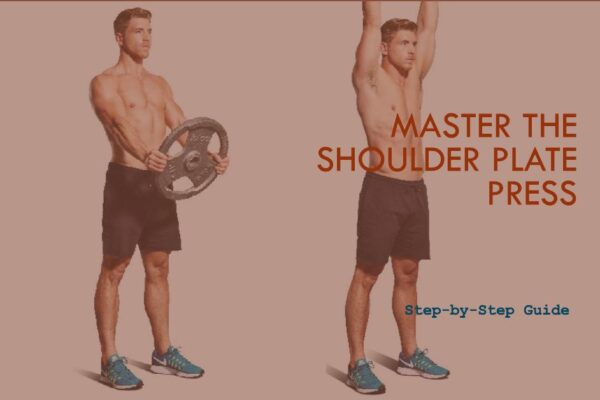
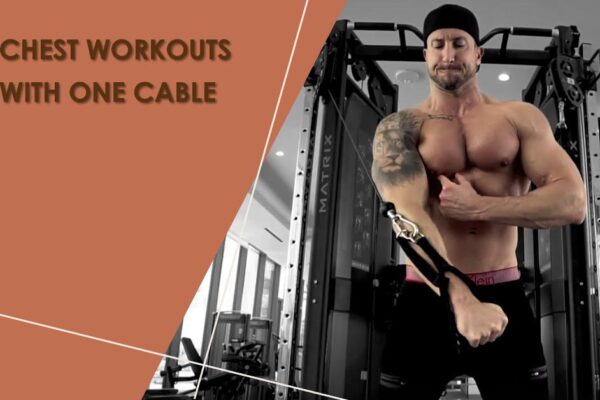
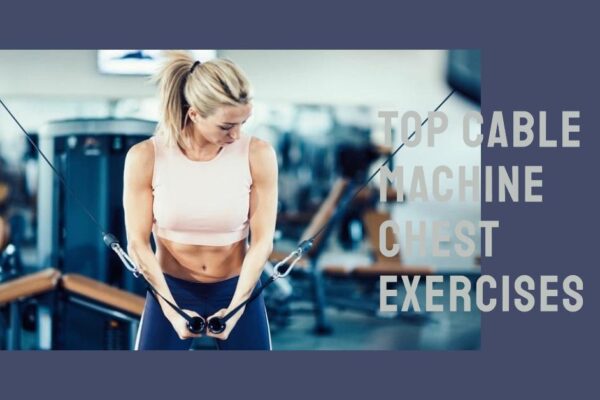
Leave a Reply